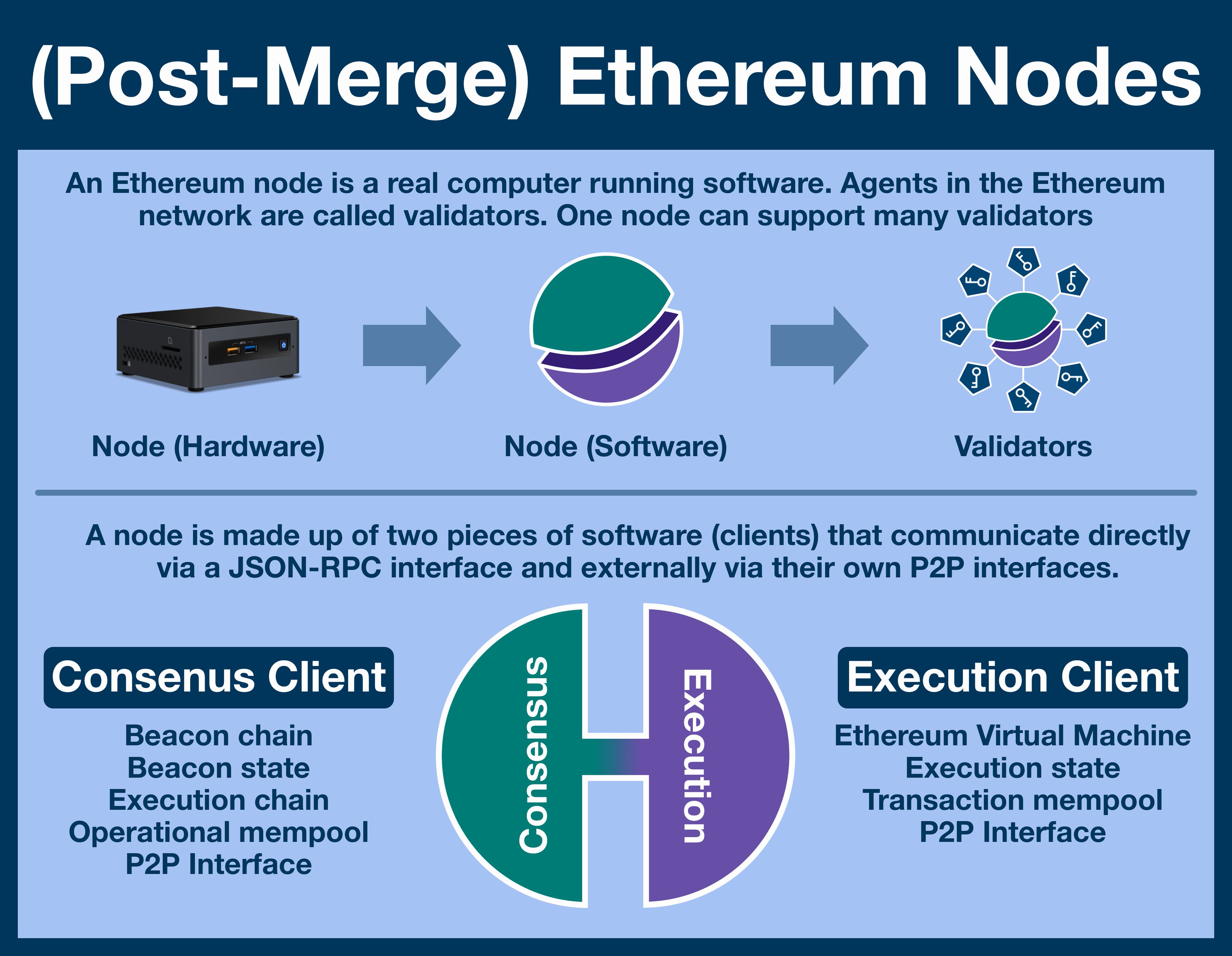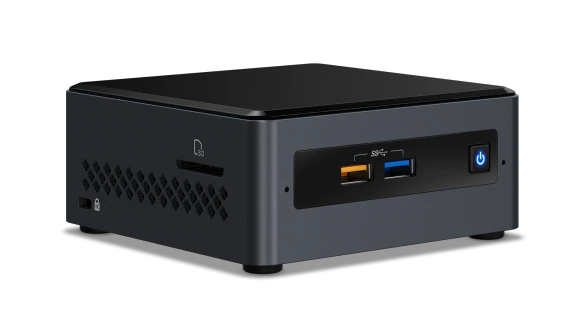
¶ Ethereum Node
¶ The World Computer
Ethereum is the World Computer, a single, globally shared computing platform that exists in the space between a network of 1,000s of computers (nodes).
Think of a node as a physical computer in the real world.
Many people, myself included, use a machine like this one. (you can also run a node on a cloud provider, like AWS or Google Cloud, but they are indistinguishable for our purposes).

¶ Validators

A node is both computer and the atomic unit of the Ethereum network.
Once running, a node operator can stake ETH, become a validator and participating in Proof of Stake (PoS).
Staking is done in 32 $ETH increments, but a single node can support many validators.
¶ Inside a Node

Zooming into the computer, the node is actually two independent pieces of software: a consensus client and an execution client.
There are 5 consensus clients and 5 execution clients, any combination will make a node.
|
Consensus Clients |
Execution Clients |
¶ The Merge
Before the Merge, you could think of Ethereum as two independent (closely tracking) blockchains: mainnet and the beacon chain.
Mainnet tracked all the changes within the Ethereum Virtual Machine (EVM), and was previously secured by Proof of Work (PoW). This chain was run by execution clients.
The beacon chain was launched in 2020, 5 years after the launch of Ethereum. Its purpose it to contain all the logic needed operate Proof of Stake (PoS). This chain was run by consensus clients.
In mid-September 2022, the two chains of Ethereum went from "closely tracking" to one single chain.
Mainnet (now called the execution chain) replaced the security guarantees offered by PoW for the security of the beacon chain.
And the beacon chain is secured by $ETH.
¶ Speaking to the Network

The Merge is very much reflected in the Ethereum we have today.
- Each node runs two, independent, pieces of software.
- These clients communicate directly with other like-clients in a peer-to-peer (P2P) network.
- They communicate to each other within each node.
Under the hood Ethereum actually two networks... it just so happens that both networks exist between the same nodes.
¶ JSON-RPC
Within a node, the consensus and execution client communicate via a remote procedure call (RPC) protocol (specifically using the JSON data format, so JSON-RPC). JSON-RPC is an API that defines both the data structures and the rules for processing them.
You may have seen the term JSON-RPC before, maybe while clicking through your crypto wallet.
The interface by which consensus clients communicate with execution clients is the same interface by which your wallet interacts with the EVM in order to create a transactions.
In fact that's exactly how you should understand your wallet.
Today, it is (probably) communicating with a centralized service like Alchemy or Infura. These companies run nodes locally and then allow people to interact with them over the web.
In the future, your wallet will have an embedded light client, and will be able to connect to Ethereum directly.
¶ Summary
In summary, an Ethereum node is a real computer that runs two pieces of software: an execution client and a consensus client.
The former is responsible for the EVM, the later for PoS.
They communicate internally via an API, but work in their own P2P networks.
¶ Resources
Source Material - Twitter Link
Source Material - PDF